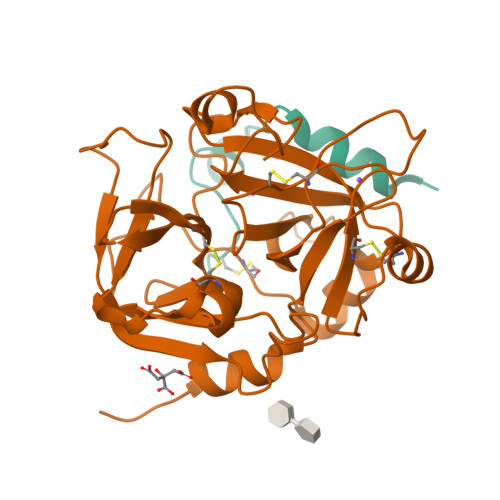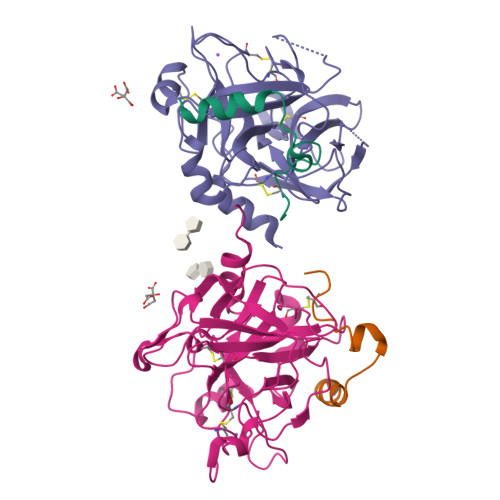Interaction of thrombin with sucrose octasulfate.
Desai, B.J., Boothello, R.S., Mehta, A.Y., Scarsdale, J.N., Wright, H.T., Desai, U.R.(2011) Biochemistry 50: 6973-6982
- PubMed: 21736375
- DOI: https://doi.org/10.1021/bi2004526
- Primary Citation of Related Structures:
3PMA, 3PMB - PubMed Abstract:
The serine protease thrombin plays multiple roles in many important physiological processes, especially coagulation, where it functions as both a pro- and anticoagulant. The polyanionic glycosaminoglycan heparin modulates thrombin's activity through binding at exosite II. Sucrose octasulfate (SOS) is often used as a surrogate for heparin, but it is not known whether it is an effective heparin mimic in its interaction with thrombin. We have characterized the interaction of SOS with thrombin in solution and determined a crystal structure of their complex. SOS binds thrombin with a K(d) of ~1.4 μM, comparable to that of the much larger polymeric heparin measured under the same conditions. Nonionic (hydrogen bonding) interactions make a larger contribution to thrombin binding of SOS than to heparin. SOS binding to exosite II inhibits thrombin's catalytic activity with high potency but with low efficacy. Analytical ultracentrifugation shows that bovine and human thrombins are monomers in solution in the presence of SOS, in contrast to their complexes with heparin, which are dimers. In the X-ray crystal structure, two molecules of SOS are bound nonequivalently to exosite II portions of a thrombin dimer, in contrast to the 1:2 stoichiometry of the heparin-thrombin complex, which has a different monomer association mode in the dimer. SOS and heparin binding to exosite II of thrombin differ on both chemical and structural levels and, perhaps most significantly, in thrombin inhibition. These differences may offer paths to the design of more potent exosite II binding, allosteric small molecules as modulators of thrombin function.
Organizational Affiliation:
Departments of Medicinal Chemistry and Biochemistry and Institute for Structural Biology and Drug Discovery, Virginia Commonwealth University, Richmond, Virginia 23219, United States.
























